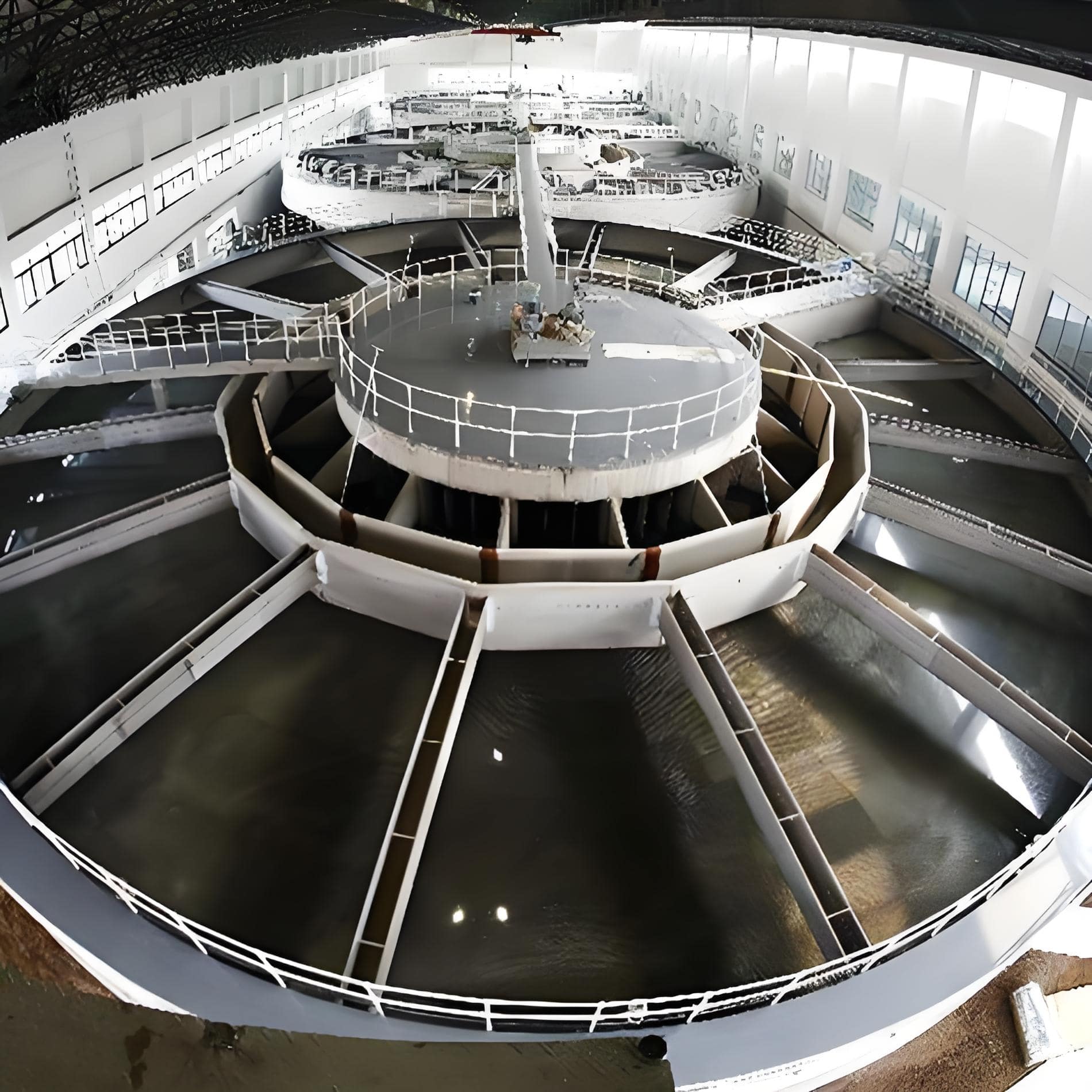he mechanical accelerated clarifier has the characteristics of small size and large water output. It belongs to the high-efficiency pool type and has a relatively strong adaptability to changes in raw water quality and water temperature.
A mechanically accelerated clarifier is a device that uses mechanical agitation to enhance the separation of solids and liquids during the water treatment process, accelerating the natural flocculation and sedimentation process. This system typically uses mechanical agitators or impellers to promote the formation and circulation of flocs, and often employs inclined tube packing to provide a larger surface area for efficient density separation. This system actively mixes pre-coagulated water with existing sludge, causing the flocs to grow larger and settle faster. This improves the efficiency and speed of the clarification process compared to passive sedimentation alone.
Mixing and Coagulation: Raw water is chemically pretreated with the addition of coagulants and flocculants before entering the clarifier. Mechanical agitators and lifting impellers mix the raw water with the previously settled sludge.
Flocculation Formation: This intensive mixing causes colloidal particles and sludge to collide with each other, forming larger, more compact flocs. 3. Sludge Circulation: A lifting impeller lifts the newly formed sludge-water mixture to a second chamber for further reaction and particle growth.
Settling and Separation: Enlarged flocs are directed to the separation zone, typically equipped with inclined tube packing. The inclined tubes create a sudden increase in tank volume in this zone, rapidly reducing the flow rate and allowing the flocs to separate from the clarified water under gravity.
Sludge Thickening and Return: Partially settled sludge is continuously returned to the mixing zone to continue the flocculation process, while excess sludge is discharged from the thickening chamber.
Accelerated Clarification: Mechanical agitation significantly accelerates the settling of suspended solids.
Sludge Contact Principle: The clarifier utilizes the sludge contact principle, allowing fresh flocs to collide with the suspended sludge layer, promoting rapid growth and sedimentation.
Efficient Mixing: Mechanical mixing ensures continuous and effective interaction between water and chemicals, optimizing the formation of large, settleable flocs. 4. Scalability: The mechanically accelerated clarifier can be scaled up to meet the scale requirements of various water treatment plants.
Optimizable Design: Design parameters such as impeller diameter, immersion depth, and rotational speed can be adjusted based on raw water quality and flow rate to optimize mixing efficiency and performance.


Copyright 2025 All Right Reserved. Hebei Fupeng Environmental Protection Technology Group Co., LTD